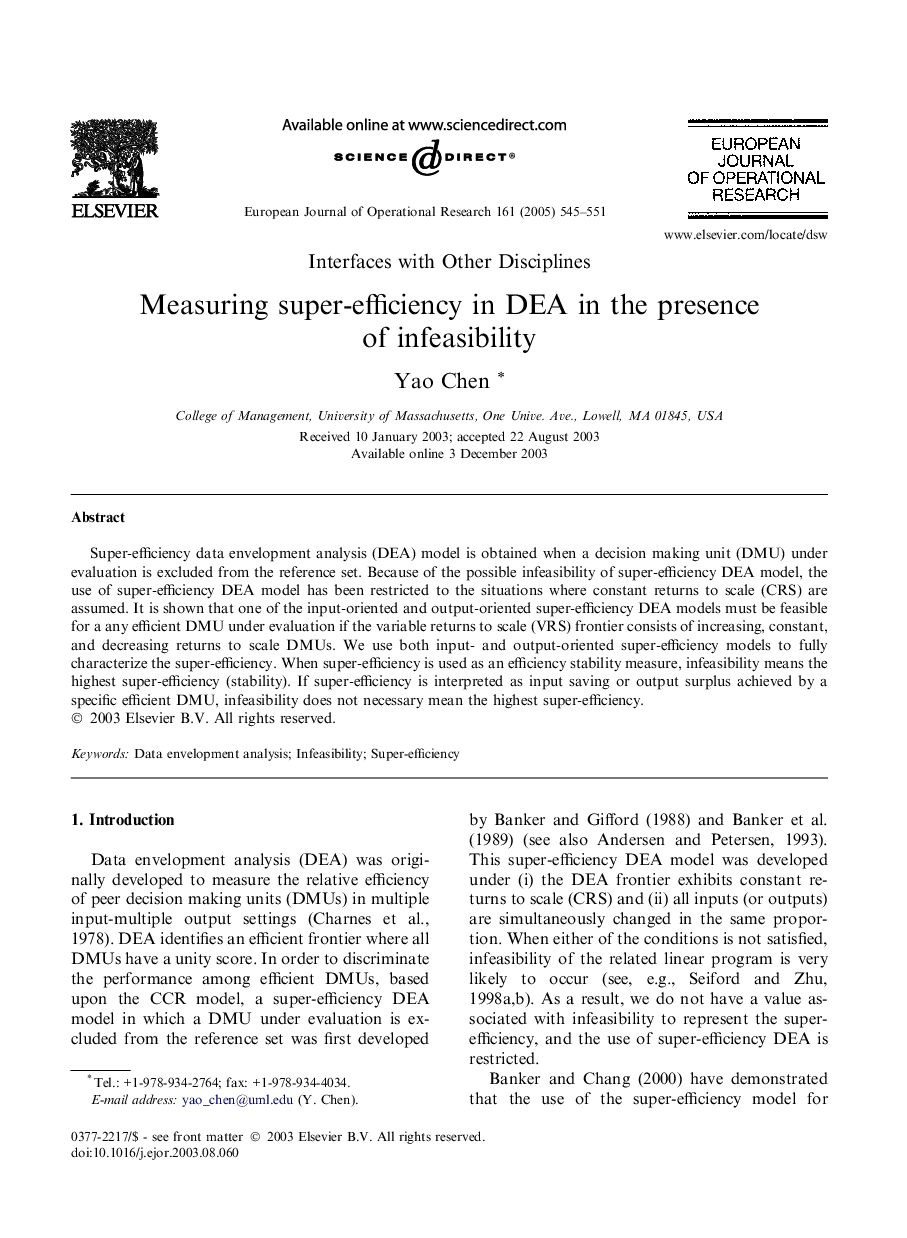| Article ID | Journal | Published Year | Pages | File Type |
|---|---|---|---|---|
| 9664024 | European Journal of Operational Research | 2005 | 7 Pages |
Abstract
Super-efficiency data envelopment analysis (DEA) model is obtained when a decision making unit (DMU) under evaluation is excluded from the reference set. Because of the possible infeasibility of super-efficiency DEA model, the use of super-efficiency DEA model has been restricted to the situations where constant returns to scale (CRS) are assumed. It is shown that one of the input-oriented and output-oriented super-efficiency DEA models must be feasible for a any efficient DMU under evaluation if the variable returns to scale (VRS) frontier consists of increasing, constant, and decreasing returns to scale DMUs. We use both input- and output-oriented super-efficiency models to fully characterize the super-efficiency. When super-efficiency is used as an efficiency stability measure, infeasibility means the highest super-efficiency (stability). If super-efficiency is interpreted as input saving or output surplus achieved by a specific efficient DMU, infeasibility does not necessary mean the highest super-efficiency.
Related Topics
Physical Sciences and Engineering
Computer Science
Computer Science (General)
Authors
Yao Chen,
